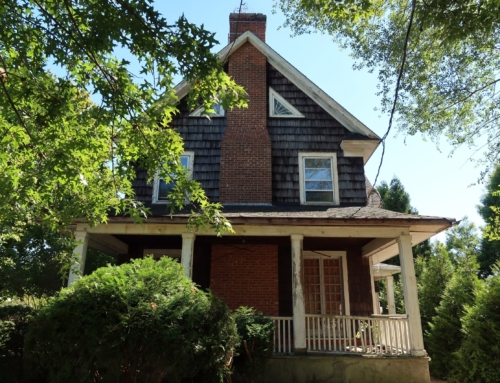How does someone get a good house when they can’t afford to spend a lot of money?
Architect and author Sarah Susanka has spent her career trying to answer that question.
It’s a career that had led to a series of highly-successful books launched with The Not So Big House, followed by Creating the Not So Big House, Not So Big Solutions, and Home By Design.
Her newest book, Inside the Not So Big House (Taunton 2005, $34.95), co-written with architect Marc Vassallo, invites readers to think about the details of their house, and use design to make the house their home.
“You can personalize with architectural details. Most people don’t know they exist. It’s the “Aha!” factor. I kept finding people who wanted to personalize their house and wanted the same details as in my house,” she explained.
She starts the book explaining that architectural details are quite different from accessories. “If you were to turn the house upside down and shake it, all these accessories would fall instantly from their various perches,” she writes.
Designed details are built into the house, and stay with it always. They could be a built-in kitchen banquette or a floor that moves from slate to wood slowly, with a few slate tiles embedded into the wood floor as a transition. Or in a bathroom, it could be mirroring the entire wall down the sink countertop to give the illusion of more space.
It isn’t that people don’t want details in their homes, Susanka explained in an interview from her North Carolina office. “Most architects don’t bring it up because it costs more money and clients don’t understand. It’s a battle to understand the possibility, but this is the stuff that makes the house feel like home. If the homeowner understood, they’d (ask the architect to) put it in and ask to leave something else out.”
In order to help the reader see how architectural details can literally make a space, Susanka’s newest book is filled with color photos and sidebars that explain different points. She also offers her own version of before and after shots, called “picture this” in which she offers two shots of the same space, one with the architectural detail, and one without.
In one photo, two antique columns support a doorway. In the next photo, the columns have disappeared. The effect is to make a reader see how the architectural detail has changed the look and feel of the space.
While Susanka focuses on making smaller spaces rather than building bigger houses, she likes to emphasize that building a smaller, well-thought out home isn’t necessary a less expensive one. Architectural details aren’t always cheap. Still, she started rethinking space and budget back in 1983, when her first client told her he could buy a house for $75,000.
“He laid down the gauntlet. I told him ‘I can’t build you a house for $75,000, but I can make you a wonderful house and we’ll do our best to bring it in at a price you can afford.'”
What she and her first business partner started thinking about was how to reapportion square footage into quality of space.
“It’s not about getting them into smaller house, but building something that expresses something about who they are and really supports their lifestyle,” she explained. “Often, when you are working with a client, what they do is come with a budget and an assumed square footage that can be built. I tell them, let’s not jump to square footage right away. Let’s do some planning. Then, I’ll tell you what dollars you’ll need per square foot so we get into the ballpark.”
The Susanka philosophy almost seems made to fit an era of home building where escalating costs have forced consumers to choose between new construction and location. These days, if you want to buy something new at a price that is affordable, you may have to drive to a brand new subdivision at the outer edge of the metro area.
“It’s really time for quality over quantity,” she said.
Although she is too busy writing books to take on individual clients, Susanka is reusing a past design with new materials in order to see if she can build a house for less money.
Susanka is building a modular home – “It has seven boxes,” she said – that will showcase her focus on architectural details, but bring it in at a price that is at least a third less expensive than traditional construction.
“Why I’m doing it is I believe there are better ways to build a house. We have the fear that if something is made in a factory, it will be lower quality. That’s like saying because a car is made in a factory, it’s a poorer product,” she explained.
In fact, she has found that quality control in a modular home factory “is extraordinary. I do a lot of detailed trim lines, moldings, and there is a real requirement of exactness. I can get builders there but it takes awhile. But with the manufacturing process of modular home building, the information is imparted once and done right,” she said, adding “It’s exciting.”
Susanka’s website, NotSoBigHouse.com, offers floor plans for all of the houses featured in the book, as well as a professionals directory, where readers can find architects and builders who subscribed to the “not so big” philosophy. To learn more, read the transcript of my conversation with Sarah Susanka.






Leave A Comment